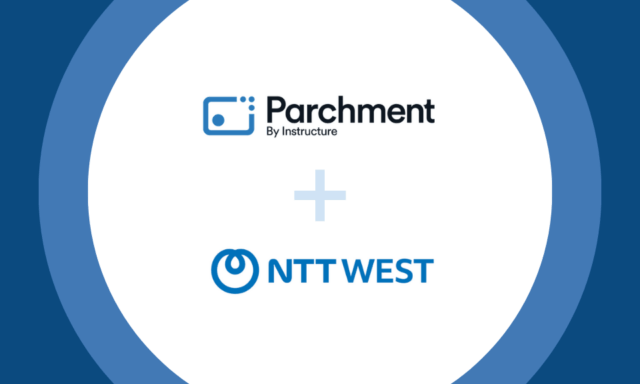
International
Parchment by Instructure and NTT West announce partnership in Japan
Parchment by Instructure is pleased to announce its partnership with NTT West in Japan.

Between Facebook, Cambridge Analytica and the E.U.’s General Data Protection Regulation (a law responsible for all of the updated privacy policy notifications you’ve gotten lately), data privacy has been all over the news these past few months. While the concept of privacy seems simple, it always turns out to be complicated, especially when it comes to students. Who has the right to their educational records – individual students? Their parents? The schools? The answers to these questions dictate who is and isn’t allow to disclose such information to third parties, which is vital to know considering the importance of student transcripts in college decisions.
So who has control over what? The good news: There’s a law that answers this question for you. The bad news: It’s kind of confusing, especially where dual enrollment is concerned. Here, we’ll break things down to make it easier for students, parents, educators and administrators.
The Family Educational Rights and Privacy Act of 1974, known in the industry as FERPA, was created to establish who owns the rights to educational records – parents, students, schools or a mix of all three?
Here’s the law in the simplest possible terms: Parents have the right to access their student’s high school records as long as the individual is a minor. Parents also have some say in the disclosure of those records and can attempt to have them amended.
There are only two conditions where ownership of student records transfers from the parent or parents to the student:
This means that 18-year-old high school students gain sole access to their school records, as do 16-year-old full-time college students.
Sounds easy, but wait: What about dual enrollment? When a high school student takes college classes that count for credits at both institutions, who owns those records?
When it comes to dual enrollment, both the high school and the college or university may need to access records held by the other institution for credit purposes. After all, dual-enrollment classes are often taught by high school teachers, so the college will need to see the student’s grades for that person to receive college credit.
This also means that, if the student is under 18, his or her parent or parents retain their original FERPA rights. They can also access any information the college or university shares with the high school (but not records that the college keeps private).
So, to summarize, parents can access, potentially alter and share student records under the following conditions:
Why is this information important? Well, many parents want to help their children apply for colleges or jobs, only to end up frustrated when they aren’t granted access to certain records. The law can be a bit of a roadblock, but FERPA helps aspiring college students take ownership of their educational records and learn to navigate the intricacies of adulthood that will be increasingly necessary in the future.
Parchment understands today’s privacy concerns, which is why our digital credentials solutions adhere to all FERPA regulations (and state ones where necessary). Furthermore, our digital records are securely stored and blue-ribbon certified, so receivers know records haven’t been altered.
Want to learn more? Get in touch with us to see how Parchment helps learners turn credentials into opportunities.